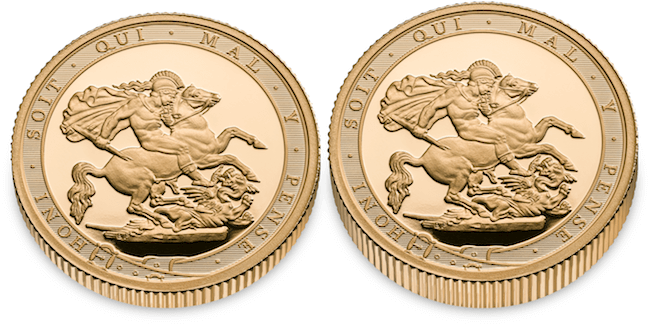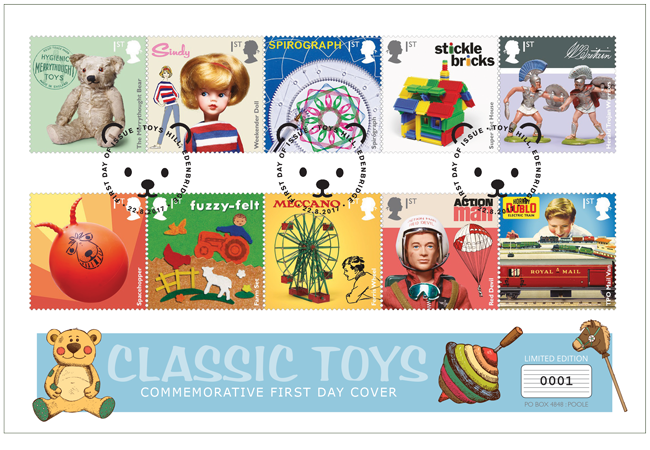Update, 27th June: It has now been confirmed that the Gold Proof Piedfort Sovereign has completely SOLD OUT at the Mint, in just 24 HOURS. It’s still available at The Westminster Collection, click here >>
2017 marks the bicentenary of the ‘modern’ Gold Sovereign – the most important numismatic anniversary for decades. To mark this occasion a number of special limited edition Gold Sovereigns have been released, including what might be the most important gold sovereign of them all – the first ever Gold Proof Piedfort Sovereign.

The Gold Sovereign is undoubtedly the United Kingdom’s most famous gold coin, and has been struck from 22 Carat Gold to the exact same specification since 1817.
To mark the 200th anniversary of the ‘modern’ Gold Sovereign, The Royal Mint has created a milestone in numismatic history by issuing the first ever Piedfort Sovereign.
Piedfort coins are some of the finest examples of British craftsmanship and the Gold Proof Piedfort Sovereign is no exception.
Prestigious reputation

You can really see the difference in thickness of the Piedfort when compared to the standard issue.
The very first Piedfort can be traced back to the 12th century. First minted in France, the name directly translates to ‘heavy measure’. The striking of Piedfort coins began later in England, however examples are known to date back to the reign of Edward I.
Piedforts were considered prestige pieces and ownership was often used as a means to signify a person’s wealth and power.

Today, Piedforts continue to be limited issues and striking of such pieces is reserved strictly for the most important events. Therefore, it seems fitting the UK’s first Piedfort Sovereign has been struck to mark 200 years of the Sovereign.
From today, for the first time ever, collectors will be able to own the Piedfort Gold Sovereign and with an edition limit of just 3,500, this new release is sure to be one that will be treasured in years to come.
You can now own the First Ever Gold Proof Piedfort Sovereign, but with such a tiny edition limit, they won’t be available for long. Sign up below if you’d like to be contacted about owning this UK first:
This August Royal Mail will be releasing a brand new set of stamps which will undoubtedly prove popular with collectors young and old.
The stamp issue celebrates ten of the UK’s most iconic and beloved ‘Classic Toys’ from the last 100 years – from Meccano to Action Man.
And although this brand new issue will undoubtedly evoke strong feelings of nostalgia across generations, given the variety it certainly begs the question, which was your favourite?
Take a look at the stamps above and VOTE for your favourite on the poll at the bottom of the page
Here’s a little bit more about each of the stamps:
1)1st Class: Merrythought Bear
Merrythought is a toy manufacturing company established in 1930. Its most famous individual bear was arguably ‘Mr Whoppit’ which was based on the “Woppit” character from the Robin comic in 1956.
2) 1st Class: Sindy Doll (first appearance 1963)
Sindy was the best-selling toy in the UK in both 1968 and 1970. With her wholesome looks proving a big hit. Originally designed by Dennis Arkinstall for Pedigree Toys and Dolls, she was modelled on an adolescent girl, and new outfits were issued every six months.
3) 1st Class: Spirograph (first appearance 1965)
Spirograph employs complicated mathematical formulae to create hypotrochoids and epitrochoids, using ‘rotor’ and ‘stator’ pieces. This sounds much too complicated for a toy aimed at children, but the mathematics works unseen in the background – all a child has to do is stick a coloured pen through a hole in one of the Spirograph tools on a piece of paper, twirl it around a few times and watch a pattern emerge. Awarded ‘Toy of the Year’ by the British Association of Toy Retailers in 1967.
4) 1st Class: Stickle Bricks
Stickle Bricks are primarily intended for toddlers and were invented in 1969. An individual stickle brick is a colourful plastic shape which is a few centimetres long and which has a “brush” of small plastic “fingers” on one or more edges. The fingers of adjacent stickle bricks can interlock, allowing them to be joined in various ways.
5) 1st Class: W. Britain Toy Figures
The William Britain company originally produced lead soldiers but subsequently switched to plastic, acquiring a manufacturer of plastic soldiers, Herald, in 1959. The soldiers proved particularly popular in the 1970s, the key selling point being that they came ready-painted. US Cavalry, Greek warriors and cowboys and Indians were among the most popular characters.
6) 1st Class: Space Hopper
Although the origins of this concept are Italian, it was initially intended as an exercise device rather than as a toy and featured a wooden handle. The version we know and love was a British creation, from Mettoy who added the ribbed, antennae-like handles and the iconic kangaroo face, in 1969. The ‘Space Hopper’ name captured the imagination of children.
7) 1st Class: Fuzzy-Felt
Fuzzy-Felt was created in 1950 by Lois Allan and comprises a flocked backing board onto which a number of felt shapes – silhouettes or more detailed printed versions, it can be placed to create different pictures.
8) 1st Class: Meccano
Invented by Frank Hornby, this was originally marketed as ‘Mechanics Made Easy’ (1901), but the name was switched to the more familiar Meccano in 1907. Meccano retains the basic elements including the spacing on the perforations and the 5/32inch Whitworth thread on the screws, meaning that new Meccano sets can still incorporate old pieces. Meccano is one of the crown jewels of the British toy industry, although now French-owned, Meccano remains amongst the most collectable of British toy manufacturers.
9) 1st Class: Action Man
American toy firm Hasbro invented the concept of a doll that boys could play with – 1964’s GI Joe, with features based on decorated war veterans. The first dolls for the UK market appeared in 1966, initially named Action Soldier. Among the most popular are footballer kits and the Red Devil parachutist, Action Man was awarded ‘Toy of the Year’ by the British Association of Toy Retailers in 1966. A 2004 poll of the public to find Britain’s Favourite Toy placed Action Man at number 2.
10) 1st Class: Hornby Dublo
Frank Hornby first introduced the scale model train sets in 1920. Originally, sets were built on the ‘O-gauge’ scale (about twice the size of the current Hornby sets). Hornby’s genius was to switch to the OO-gauge (known as ‘Horny Dublo’) from 1938, which allowed for complex layouts to be built on a smaller budget and in a smaller space, taking into account the modest size of the average British living room. Hornby trains are able to appeal to many different character types across multiple generations.
Which was your favourite? VOTE NOW in our poll below:
If you’re interested…
Pre-order your ‘Classic Toys’ First Day Cover today
The ‘Classic Toys’ stamps are sure to be of interest to anyone who fondly remembers the iconic British toys explored in the Royal Mail issue.
You can reserve all of the new ‘Classic Toys’ stamps now on a limited edition First Day Cover.


 Today, the Red Arrows have been granted Public Display Authority for the 2017 air display season and we can’t wait to see what they have in store for us this year!
Today, the Red Arrows have been granted Public Display Authority for the 2017 air display season and we can’t wait to see what they have in store for us this year!


